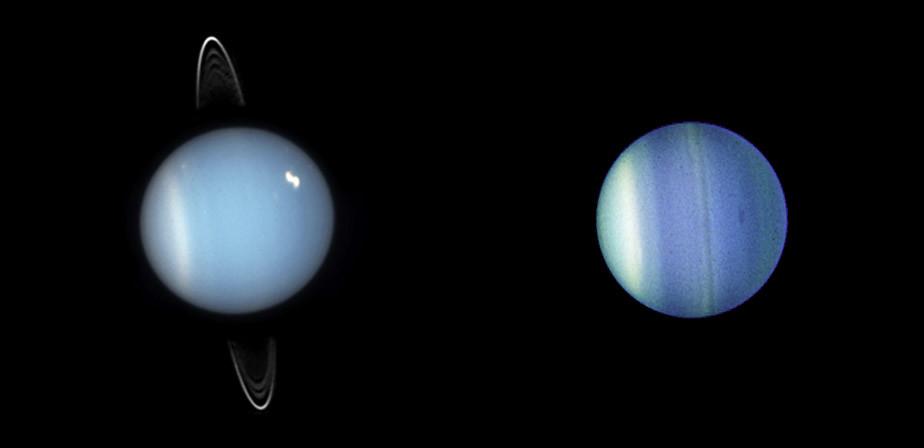In a vast universe filled with celestial wonders, the diversity of planets never fails to captivate our imagination. From fiery infernos to icy orbs, each planetary type presents a unique tapestry of elements and atmospheres waiting to be explored. Join us on a cosmic journey as we delve into the intriguing world of planetary types, uncovering the mysteries and marvels that define these celestial bodies. Let’s embark on a voyage beyond our own world and discover the astounding variety of planets that grace the cosmos.
Table of Contents
- Exploring the Diversity of Planetary Types
- Unveiling the Characteristics of Terrestrial Planets
- Diving into the Mysteries of Gas Giant Planets
- Comparing the Unique Features of Ice Giant Planets
- Q&A
- Closing Remarks
Exploring the Diversity of Planetary Types
Planetary types in the vast universe offer a glimpse into the incredible variety of worlds beyond our own. From scorching hot infernos to icy realms, each planet tells a unique story of its formation and composition. Explorers gaze in wonder at rocky terrains sculpted by time or gas giants swirling with vibrant colors – a testament to the wonders of cosmic diversity.
- Rocky Planets
- Gas Giants
- Ice Worlds
Delving into the mysteries of planetary types unveils a tapestry of astronomical marvels waiting to be uncovered. Scientists unravel the enigmatic nature of exoplanets, while dreamers envision worlds teeming with life or cloaked in perpetual darkness. Each celestial body, whether barren or brimming with potential, adds to the mosaic of planets dotting the universe, inviting exploration and sparking curiosity.

Unveiling the Characteristics of Terrestrial Planets
Terrestrial planets, also known as rocky planets, are a fascinating subject of study in the realm of astronomy. These planets share several key characteristics that set them apart from their gas giant counterparts. Let’s delve into the intriguing features that define terrestrial planets:
- Rocky Surfaces: Terrestrial planets have solid surfaces made up of rocks and metals. This solid composition distinguishes them from gas giants that lack a solid surface.
- Thin Atmospheres: Compared to gas giants with thick atmospheres primarily composed of hydrogen and helium, terrestrial planets have thinner atmospheres consisting of gases like carbon dioxide, nitrogen, and oxygen.
Exploring the inner workings of terrestrial planets provides valuable insights into the formation and evolution of planetary systems within our vast universe. Understanding these characteristics sheds light on the diversity and complexity of celestial bodies scattered throughout space.

Diving into the Mysteries of Gas Giant Planets
Gas giant planets, such as Jupiter and Saturn, are intriguing celestial bodies that captivate astronomers and space enthusiasts alike. These massive planets, composed mostly of hydrogen and helium, hold many mysteries waiting to be unraveled. Their swirling atmospheres boast mesmerizing features like the Great Red Spot on Jupiter, a massive storm that has been raging for centuries.
Exploring the depths of gas giant planets reveals a world of immense complexity and beauty. From the intricate ring systems of Saturn to the turbulent weather patterns of Uranus and Neptune, each planet offers a unique perspective on the wonders of our solar system. Scientists continue to study these colossal worlds, seeking to understand their origins, compositions, and the secrets they hold about the formation of our universe. Whether pondering the elusive diamond rain on Neptune or the colossal magnetic fields of Jupiter, gas giant planets never fail to surprise and inspire those who dare to delve into their enigmatic realms.
Comparing the Unique Features of Ice Giant Planets
In the vast expanse of our solar system, ice giant planets stand out as intriguing celestial bodies with their own set of unique characteristics. Neptune, known for its stunning blue hue and powerful storms, showcases a striking combination of beauty and ferocity. This distant planet is enveloped in a thick atmosphere of hydrogen, helium, and methane, contributing to its captivating appearance and extreme weather patterns.
Uranus, on the other hand, rotates on its side, making it a true oddity among the planets. This sideways orientation gives rise to unusual seasons and a magnetic field that differs from its planetary counterparts. With a composition of hydrogen, helium, and traces of methane, Uranus presents a mysterious allure waiting to be unraveled. Exploring the distinct features of these ice giants offers a fascinating glimpse into the diverse wonders of our solar system.
| Planet | Unique Feature |
|---|---|
| Neptune | Stunning blue hue |
| Uranus | Rotates on its side |
Q&A
Q: What are the different types of planets in our solar system?
A: In our solar system, we have four main types of planets: terrestrial planets, gas giants, ice giants, and dwarf planets.
Q: What defines a terrestrial planet?
A: Terrestrial planets, including Mercury, Venus, Earth, and Mars, are characterized by their solid surfaces, rocky composition, and relatively small size compared to gas giants. They are located closer to the sun and have thin or nonexistent atmospheres.
Q: What distinguishes gas giants from other planetary types?
A: Gas giants, like Jupiter and Saturn, are massive planets primarily composed of hydrogen and helium. They have thick atmospheres, lack solid surfaces, and are known for their impressive ring systems and numerous moons.
Q: Can you explain what ice giants are?
A: Ice giants, such as Uranus and Neptune, are similar to gas giants but have a higher proportion of “ices” like water, ammonia, and methane in their composition. They are located farther from the sun and have distinctive blue hues due to methane in their atmospheres.
Q: What role do dwarf planets play in our solar system?
A: Dwarf planets, like Pluto and Eris, are celestial bodies that share characteristics with planets but are not considered full-fledged planets due to their size and inability to clear their orbital paths. They provide valuable insights into the diversity of objects orbiting our sun.
Q: Why is understanding planetary types essential in astronomy?
A: Studying planetary types helps astronomers unravel the mysteries of our solar system’s formation, evolution, and diversity. Each type offers unique insights into the processes shaping celestial bodies and their interactions within the vast cosmos.
Closing Remarks
As we conclude our journey through the diverse realm of planetary types, we invite you to gaze up at the night sky with newfound wonder and curiosity. From the scorching infernos of terrestrial planets to the icy mysteries of gas giants, the universe presents us with a tapestry of celestial marvels waiting to be explored. Whether you’re a seasoned astronomer or simply an admirer of the cosmos, the beauty and complexity of planetary diversity never cease to captivate our imagination. As we look beyond our own pale blue dot, let’s continue to seek answers, ask questions, and embrace the infinite possibilities that lie beyond the stars. May your adventures in space be as boundless as the universe itself. Thank you for joining us on this cosmic odyssey.


0 Comments